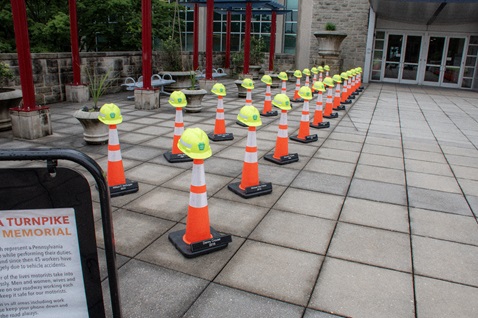
July 2025
Welcome to The Road Ahead!
What an exciting time it is to be a part of America's First Superhighway. As the Pennsylvania Turnpike celebrates its 85th birthday, we're not slowing down - we're growing.
From expanding the Mon/Fayette Expressway near Pittsburgh to widening lanes across the system from four to six, we're building for today's traffic demands and tomorrow's growth. But our progress isn't just physical. We are embracing innovation to improve transportation, safety, sustainability, and more.
In this and future issues of The Road Ahead, you'll find stories highlighting how we're continually building for the future. While we're proud to celebrate the launch of our cashless, eco-friendly Open Road Tolling system in the eastern part of the state earlier this year, our crews are already expanding this new system westward. Open Road Tolling makes travel more convenient for our customers and enables us to improve access to neighboring communities with new interchanges and is powered by a state-of-the-art fiber optic network.
We're also channeling the creativity of our team through the Turnpike's Innovation Council while driving environmental excellence through our Sustainability Committee. From harnessing solar energy to expanding support for electric vehicles, we're laying the foundation to become America’s First Sustainable Superhighway by our 100th anniversary in 2040.
Through it all, safety remains our top priority. The award-winning Work Zone Speed Safety Camera Program and our New Driver Work Zone Safety initiative - both of which are collaborations with PennDOT - are helping to protect both drivers and workers.
And this is just the beginning.
So, join us each month to stay up to date on all the excitement at the Pennsylvania Turnpike. We're glad to have you with us as we continue the journey on The Road Ahead.
-Mike Carroll, Pennsylvania Secretary of Transportation

Heading West: Open Road Tolling Expands to Rest of State as Toll Booth Demolition Kicks Off
Turnpike travelers in central and western Pennsylvania may be wondering about the stone buildings and columns crews are building along the highway, but those in the east already know.
It's Open Road Tolling.
This cashless, free-flowing system launched east of Reading and along the entire Northeast Extension on Jan. 5, changing the way the Turnpike collects tolls, and it is expanding westward.
“It’s been a long time coming, and there have been a huge amount of people involved,” said Turnpike Facilities Engineering Manager Don Steele, who is heading up the civil engineering portion of Open Road Tolling (ORT). “I think when we look back 10, 20, or 30 years from now, we’ll see Jan. 5 as a real big step in our being cutting edge.”
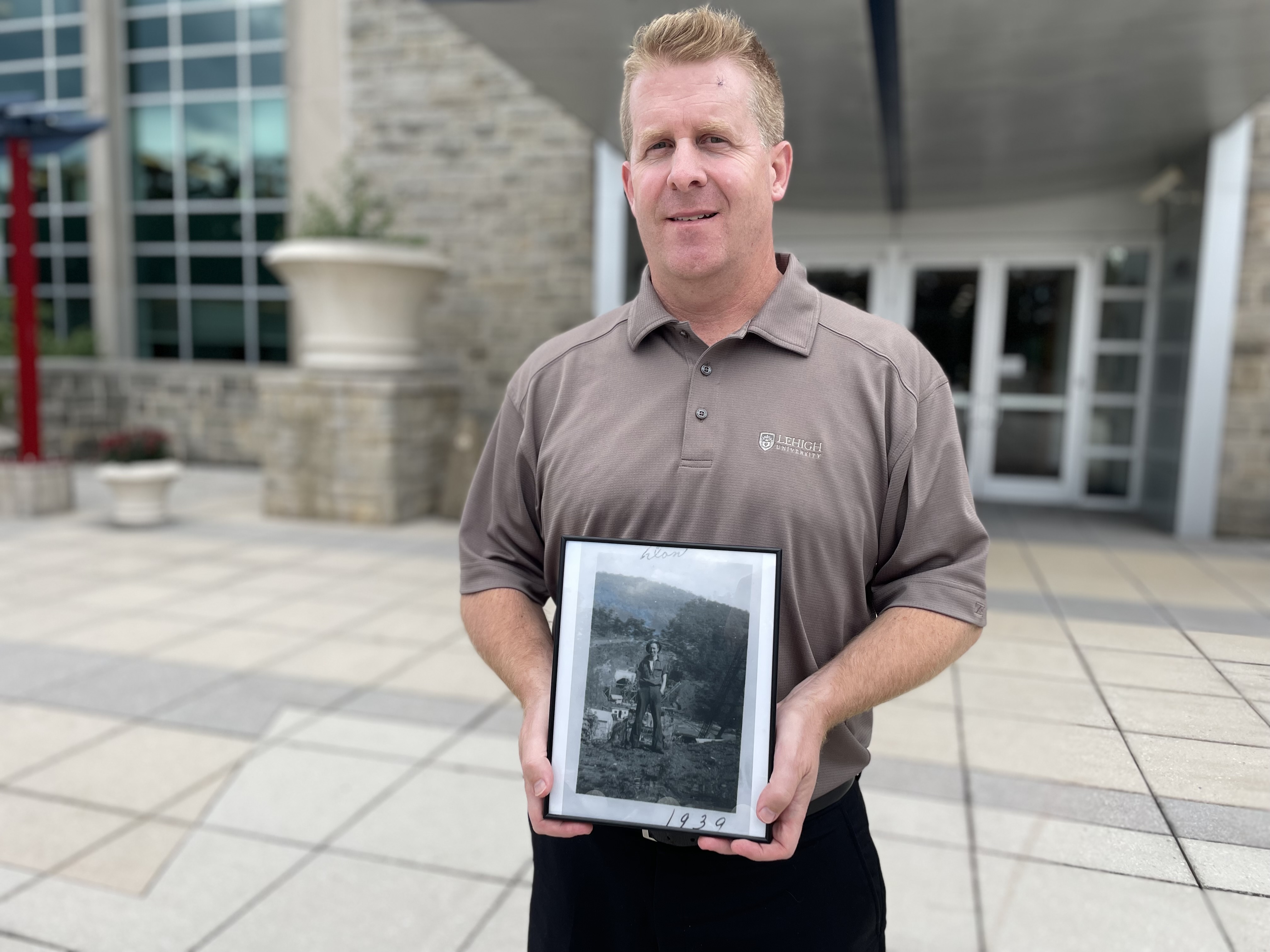
Facilities Engineering Manager Don Steele is heading up the civil engineering portion of Open Road Tolling. He’s pictured above with a photo of his grandfather, who helped build the original Turnpike in the late 1930s.
Under ORT, tolling equipment on gantries spanning over the highway collects vehicle information from transponder devices for those who have E-ZPass accounts while overhead cameras capture a series of high-definition images of license plates to generate Toll By Plate invoices to be mailed to vehicle owners if no E-ZPass was detected. This is all done at highway speeds for a smoother, safer, and more convenient tolling system.
Since toll booths will no longer be needed, their demolition has started in the eastern part of the state, where Open Road Tolling is already underway. In western and central Pennsylvania, crews are building the pre-cast columns with a stone motif that will hold the ORT equipment on gantries over the highway at 18 different sites.
And the adjacent buildings with a similar façade?
"We get a lot of questions, and those are not restrooms," Steele said.
Those buildings will store the necessary computer systems and generators to run Open Road Tolling, transmitting massive amounts of data over a high-speed, fiber optic network to a tolling-data hub near Middletown.
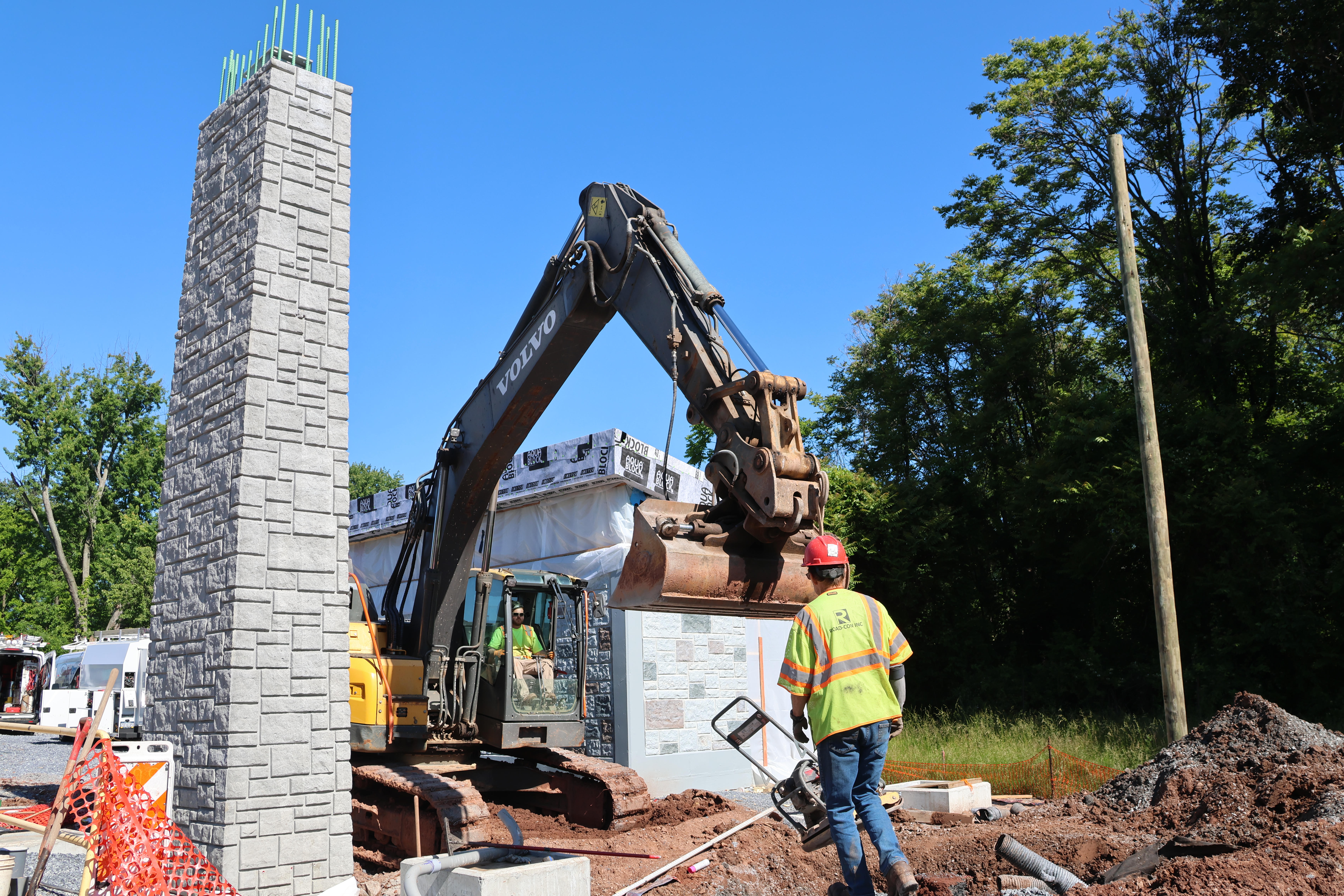
As Open Road Tolling expands west, crews are building the infrastructure to hold the tolling equipment, like this site near Middletown.
At the same time, crews will be installing "loops" in the road to read the axles of passing vehicles, which will be tolled by the number of axles and height rather than weight, which is in line with the rest of the industry.
At the Pocono Interchange, toll booth demolition is underway, as are the old All Electronic Tolling gantries at the Route 903 Interchange, and bids have been awarded to tear down the rest of the tolling plazas in the east.
"This will be a bit of a change to our customers and will bring a totally different feel to our interchanges, but ultimately, it will be safer and less congested," Steele said.
Steele knows a little bit about the history of the Turnpike – his grandfather helped build it. Read all about that here.
Once the legacy toll booths are removed, interchanges will be more open and free flowing, eliminating driver confusion, and will be more environmentally friendly, taking up less of a footprint and reducing idling.
Toll plaza demolition in the east should wrap up by late 2026, and in the west, that process will start after the system goes live in 2027 and be completed by late 2028.
Read more about Open Road Tolling here.
New Drivers and Work Zones: Turnpike Leads Efforts on New Statewide Course
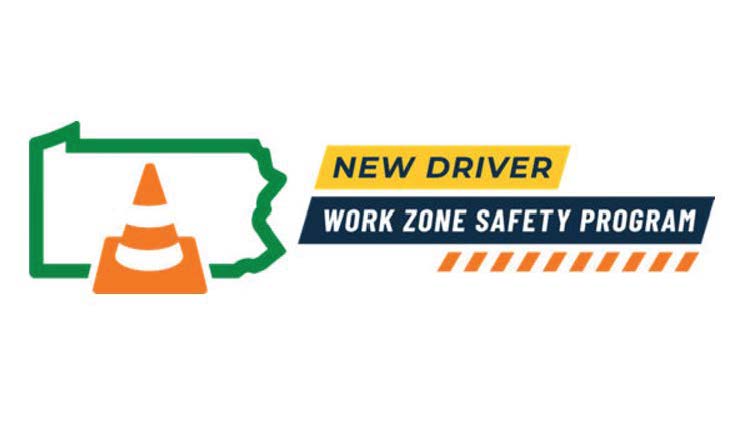
When Justina Wentling flipped through the Pennsylvania Driver's Manual, she was shocked to find just three pages - three out of 64 - dedicated to driving in work zones.
"It's definitely alarming," Wentling, who is the Pennsylvania Turnpike's Manager of Traffic Engineering, said.
All those orange cones, signs, concrete barriers, lumbering trucks and lights could be overwhelming to a new driver with so little training on the subject. That's why Wentling and the Subcommittee on Work Zone Safety led the PA Turnpike's efforts to give new drivers the tools they need with the New Driver Work Zone Safety Program. This joint effort with PennDOT officially launched statewide in October, supplementing Pennsylvania's standard driver's ed.
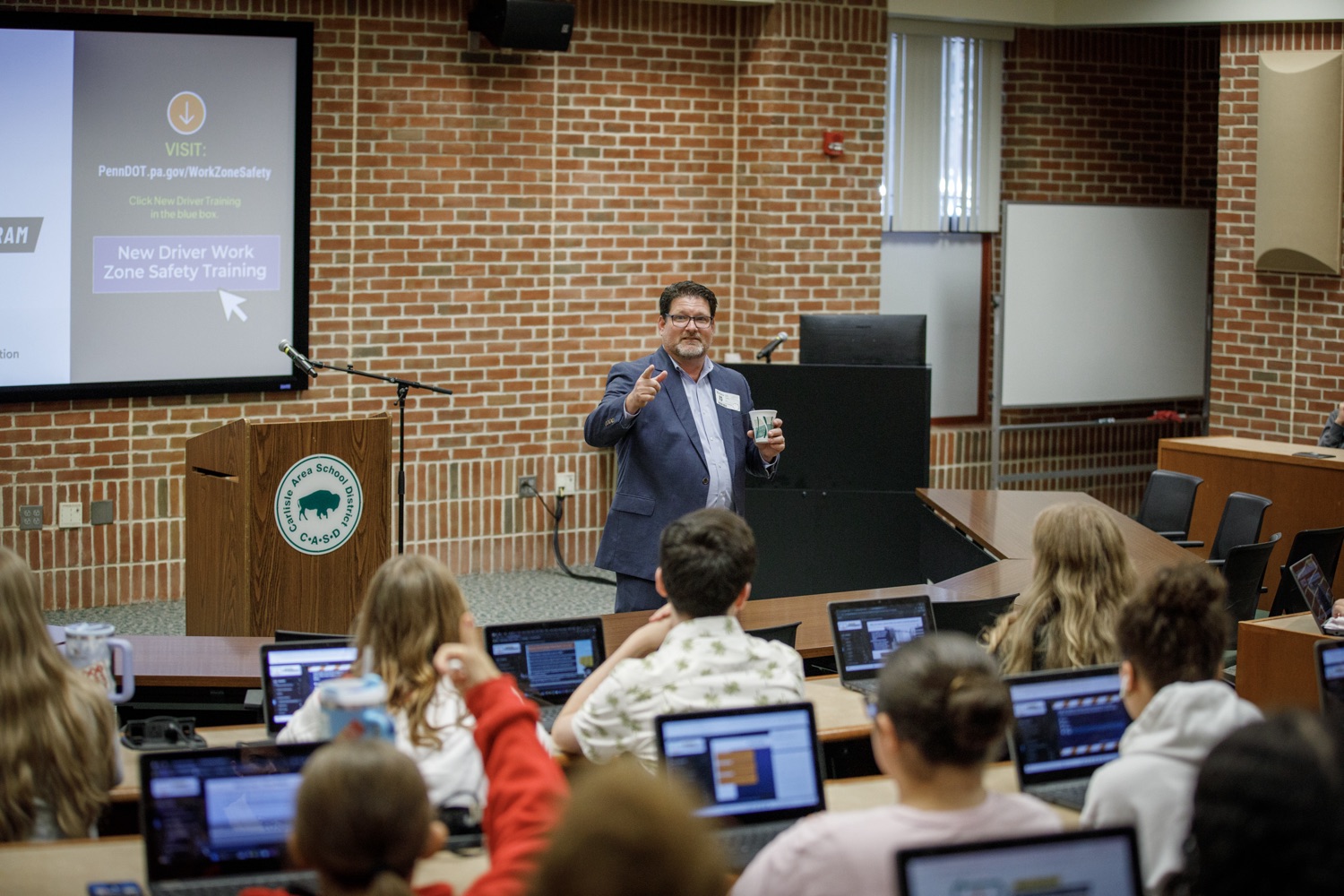
Turnpike Chief Operating Officer Craig Shuey talks to students at the launch of the New Driver Work Zone Safety Program in October.
You can take the New Driver Work Zone Safety Course and find more information here.
To create this program, Wentling and the team turned their eyes to the Sooner State. That's where former Oklahoma Deputy Secretary of Energy Tom Robins developed Oklahoma's Work Zone Safe.
The Pennsylvania version of the course takes it to the next level and is more interactive with short videos and question-and-answer sessions throughout the course to better engage students and help them absorb this important information, she said.
Watch our Work Zone Safety Program Video
"It's really to get them to understand the importance of why they need to slow down and pay attention when driving through work zones," Wentling said. "Those are our fathers, brothers, sisters, aunts and uncles who could be working alongside that roadway."
And that personal connection, the face behind the sign, is the core of this course.
"I could see this being developed in a way that other states can use our program or work with us to model a program that can work in their own state," she said. "I'm hoping this leaves a lasting mark on safety in our work zones."
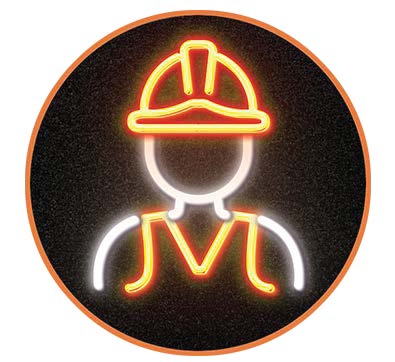
'Go Orange' Celebrates 10th Anniversary
The summer travel season is here, road crews are out in full force, and a Pennsylvania Turnpike program that lets drivers know they need to slow down and pay attention in work zones is celebrating A Decade of Dedication.
Go Orange is back, and while it can be a fun campaign, it was born out of dire circumstances 10 years ago. Drivers were speeding and just not paying attention in work zones, and after the highway deaths of two more members of the PA Turnpike team, something had to change.
Turnpike Chief Strategy and Communications Officer Kelli Roberts said there was a lot of color advocacy at the time, like pink for breast cancer awareness, and using the color orange would send a clear message.
Thus, Go Orange was born.
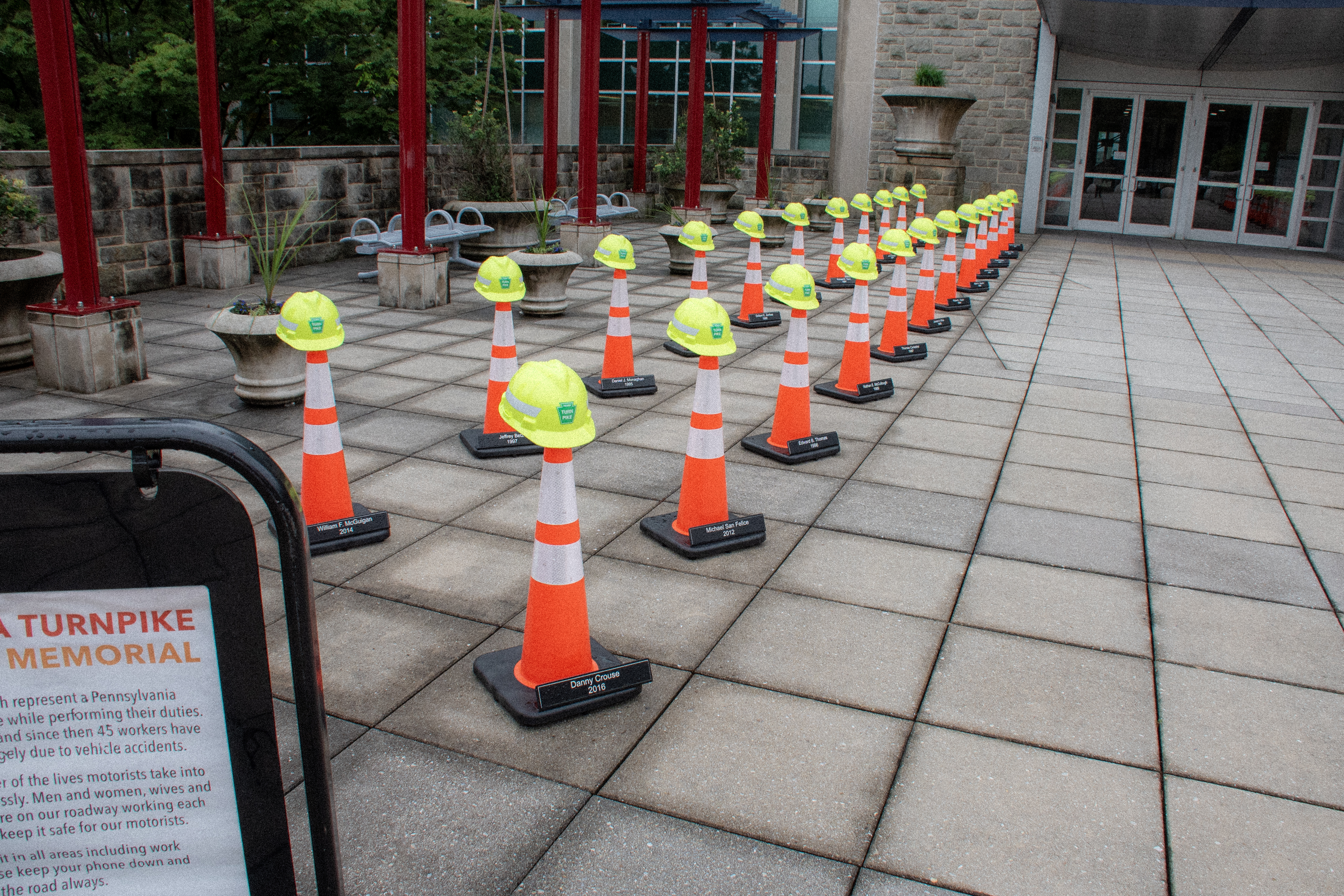
The PA Turnpike Lost Worker Memorial serves as a reminder of the 45 team members who lost their lives in service on the highway. Each is represented by a hard hat on a highway cone.
"We were able to take how sad and desperate we all felt and provide people with a way to be a part of the conversation. We all play a role," she said. "It's fulfilling to be part of an organization that cares so much".
Go Orange has spread the word over the last 10 years with impactful TV spots personalizing highway workers and a decade's worth of vivid orange slogans, billboards, images and videos.
Watch our Go Orange Memorial video
It's part of a multi-prong campaign through the Subcommittee on Work Zone Safety, which has worked over the last 10 years on numerous innovations that have helped reduce the Turnpike's work zone crash rate by more than 20% in the last decade while those numbers are increasing nationally.
And Go Orange played a role.
"This brings work zone safety to the forefront of people's minds so that when they see road crews, they will slow down and won’t drive distracted," Director of Traffic Engineering and Operations Tom Macchione said.
Perhaps the most impactful part of Go Orange is the PA Turnpike Lost Worker Memorial, consisting of highway cones with a Turnpike hardhat, each bearing the name of one of the Turnpike's 45 lost workers. Each cone represents one person who did not make it home to their family.
This year's anniversary campaign includes a new neon motif, which you may have seen on billboards around the Turnpike. You can see a few of those designs and find out more about safe driving in work zones here.

Since the beginning of Go Orange, Turnpike employees have worn orange on Wednesdays to show their support for highway workers and as a reminder to slow down and pay attention in work zones.
The Turnpike is also encouraging drivers to sign the Go Orange pledge to show their commitment to driving safely.
While Go Orange caught on with the public, it's also popular among Turnpike employees, many of whom wear orange every Wednesday. And the fact that they're still wearing orange 10 years later shows Roberts, who was there from the beginning, that Go Orange is more than a marketing campaign.
It's about protecting our highway crews.

.tmb-2_column.jpg?sfvrsn=3619e375_1)

